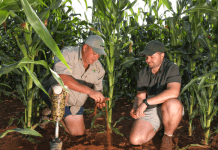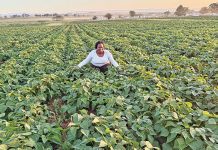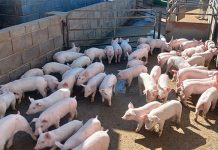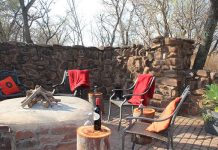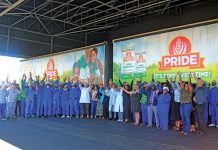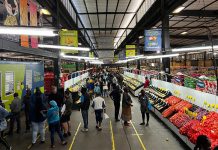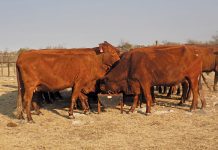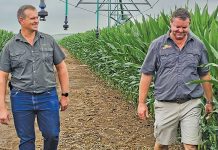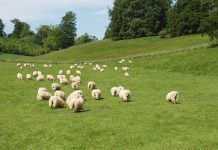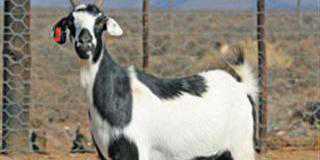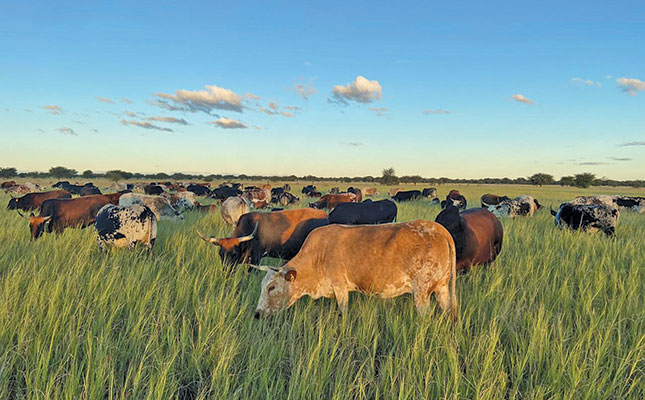
Photo: Bhetjane Cattle Co
In a society where ‘economies of scale’ has been the buzz phrase for decades, it seems strange that a farmer could be more profitable on a smaller scale.
Yet this is exactly what happened when Hannes Botha, a farmer running a mixed enterprise near Carolina, Mpumalanga, introduced regenerative farming practices on his farm, Fairview.
“I was able to double my farm’s carrying capacity in a single season; it was like buying a second farm,” Botha said during a recent regenerative agriculture webinar.
A few years prior to this journey towards restoration, Botha had tried to implement precision farming. It had cost an arm and a leg, yet had brought very little improvement to his operation. He began researching alternative farming techniques and started learning from regenerative farming pioneers, including Allan Savory, Elaine Ingham and Dr Christine Jones.
“This opened a new world to me. I came to realise that conventional agricultural practices have a negative impact on the environment and people.”
Botha, a third-generation farmer, has been practising regenerative agriculture for three seasons.
“I moved away from conventional agricultural farming practices when I realised it doesn’t make sense to spend more and more for the same or smaller profit. I also realised that higher yields don’t necessarily equate to higher profits.”
By implementing the knowledge that he gained and using the tools he already had, he changed his livestock management programme to an ultra-high-density grazing (UHDG) system and, within a single season, was able to double the veld’s carrying capacity.
Healthy soil, healthy cattle
North West cattle farmer DF Fyfer, owner of Bhetjane Cattle Co, also uses UHDG on his farm near Louwna. He says that one of the most important departure points of regenerative agriculture is the realisation that healthy veld does not start and end with good grass cover, but that the health of the soil is equally important. Moreover, healthy soil and cattle are interconnected.
“Everything we do on our farm is aimed at increasing the veld’s carrying capacity and adding value to our products.”
The objective of such a UHDG system is to create smaller camps to be utilised by ultra-high stock rates for short periods. After grazing, each camp is allowed to rest for longer periods.
Genetics was a major solution to the challenges Fyfer experienced. He explains that regenerative farming requires animals that can adapt quite easily, which led him to realise that he needed a hybrid animal.
“The body condition score [BCS] is one of the most important indicators of our business. Genetics is the easiest way to address issues concerning BCS.”
Fyfer started farming with the Adaptor, a breed formed by combining the Beefmaster, Boran, Nguni and Mashona. This composite was bred according to Johann Zietsman’s Veldmaster principles and specifically developed for UHDG.
Fyfer also realised that farming entailed the entire ecosystem, not just cattle. He therefore decided to include chickens in his system, and have them feed on the same veld as the cattle.
The chickens are kept in moveable chicken coops, known as TrEGGers, which are moved regularly, allowing the chickens to contribute to improving the veld by spreading their own, as well as the cattle’s, manure and by combating pests.
Fyfer also farmed bees and planted pollination strips near watering points. The bees help pollinate all the plants in the ecosystem.
Measuring the impact
Grazing specialist Frits van Oudtshoorn has drawn similar conclusions over the few seasons he has helped and observed the results obtained on Reitz-based Danie Slabbert’s farm in the Free State.
Slabbert runs about 500 head of Drakensberg cattle on his farm and started using a UHDG system in December 2017. He fenced rectangular cells within a 100m-wide electrified strip. Depending on the biomass, the camp sizes vary from 100m x 7m to 100m x 15m.
During summer, the animals are moved hourly between 6am and 7pm, which equated to an average animal density of about 5 000 LSU/ ha/ hour, extrapolated to a carrying capacity of 6 LSU/ha/year. (The official government recommendation for this farm is 4 LSU/ha/year.)
“UHDG leads to non-selective grazing, a high degree of trampling and a high concentration of manure and urine,” says Van Oudtshoorn.
The same system is used during winter, but the animals are moved to graze on maize and soya bean residue and cover crops specifically planted for them.
“It’s important to realise that the sandy and loam soils these animals are grazing on are the farm’s marginal lands. The better soils are used for crop production,” says Van Oudtshoorn.
To track the progress, he identified seven monitoring points in the area. Four of these were set on the main farm, where the UHDG (or non-selective grazing) was taking place, while the rest formed a control group. Two of the control group sites were based on a neighbouring farm, where animals were moved between the two camps on roughly a monthly basis.
This grazing approach led to a high degree of selective grazing, and the sites were collectively known as the “selective grazing control sites”. The third site of the control group was a portion of veld where no grazing took place; it was called the “zero-grazing control site”.
“We determined the grass species composition by using the so-called line transect method,” says Van Oudtshoorn.
“With this data on hand, we looked at the grass species diversity, ecological status groups, veld condition score percentage and grazing capacity. Finally, the biomass production [kg/ha] was also an important factor to look at during this study.”
The grasses were categorised into four ecological status groups, namely decreasers, increaser 1, increaser 2 and increaser 3 (see Table 1).
“In 2019, the decreasers at the UHDG sites stood, on average, at 19,7%. By 2021, they had increased to 32,1%, an increase of 12,4% in two years. When looking at the selective grazing control sites, the decreasers had grown by 5,7% from 8% to 14,9% over the same period. The decreaser grasses declined from 13,2% to 0% over the same period at the zero-grazing control sites.”
The increaser 1 grasses increase when veld is underutilised. At the UHDG sites, this group increased by 1,8% from 17,6% to 19,4%. Interestingly, they did not increase at all in the selective grazing sites, while they increased by 20% in the area where no grazing took place.
“The increaser 2 species declined by 1,9% from 23% in 2019 to 21,2% in 2021 at the UHDG sites, while it declined by 38,7% from 82% to 43,3% in the selective grazing sites,” says Van Oudtshoorn. “At the zero-grazing sites, the figure declined by 1,5% from 7,5% to 6%. The UHDG sites were the only sites where the grass species diversity increased during the two-year study period.
“It’s still too early to draw any definite conclusions, as we only have two years’ worth of data. However, almost all veld condition assessment criteria used in this study indicate higher average values at the non-selective grazing [UHDG] sites compared with the control groups. We’ll continue monitoring the situation and even expand our ecological parameters further.”
Email DF Fyfer at [email protected], or Frits van Oudtshoorn at [email protected].


